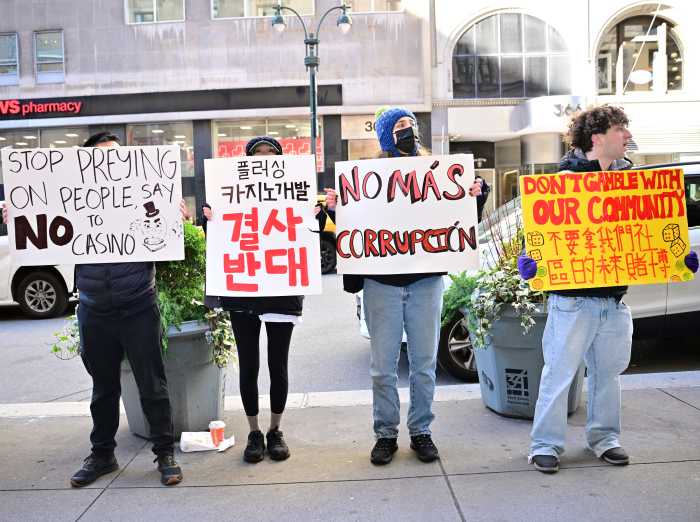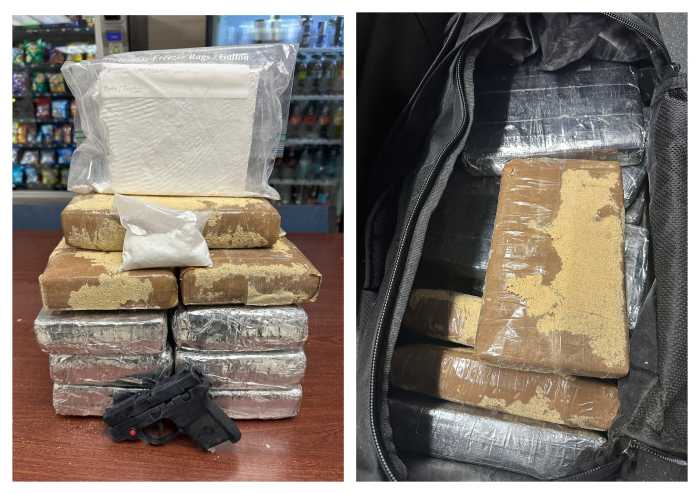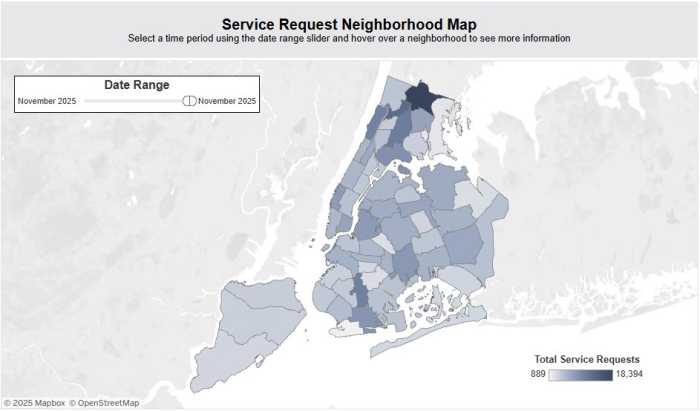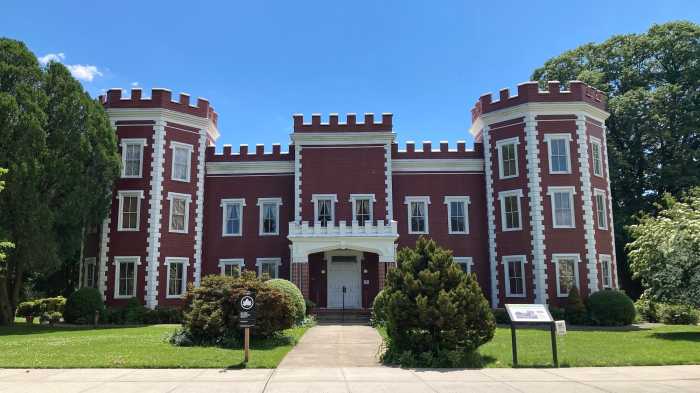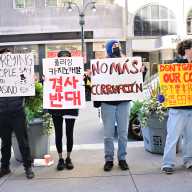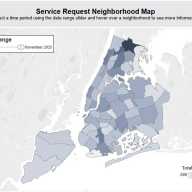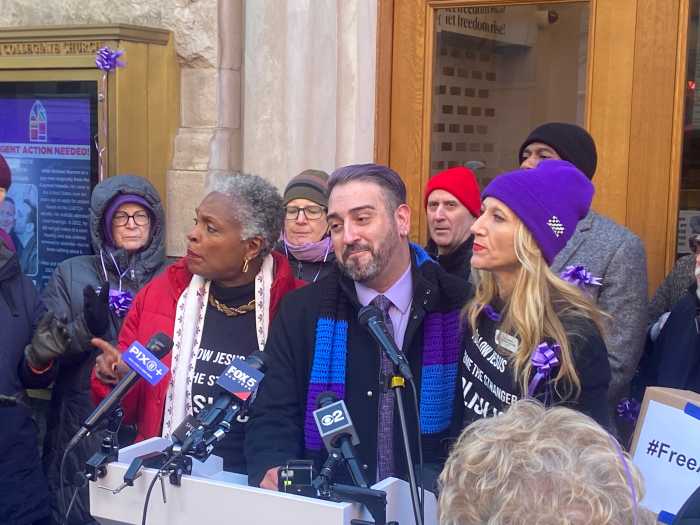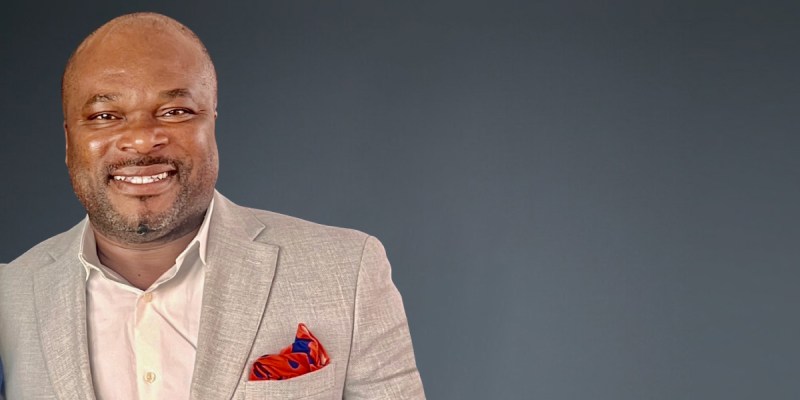Queens Borough President Donovan Richards Jr. joined Samaritan Daytop Village last week for a solemn memorial ceremony honoring the lives of Queens residents lost to opioid overdoses in 2023—the most recent year for which city data is available.
The event, held on Monday, April 28, outside Queens Borough Hall, was organized in partnership with Samaritan’s Peer Alliance Recovery Centers (PARC). Richards was joined by Mitchell Netburn, President and CEO of Samaritan Daytop Village, along with Peer Recovery Professionals and community advocates.
As part of the tribute, 463 purple ribbons were placed on the lawn in front of Borough Hall—each symbolizing a Queens resident who died from an opioid overdose last year. The visual memorial served as a poignant reminder of the ongoing opioid crisis and its impact on families across the borough.
Overdose deaths have soared in the last decade. In 2023, 3,046 people died from an overdose in New York City, according to data from the NYC Department of Health and Mental Hygiene.
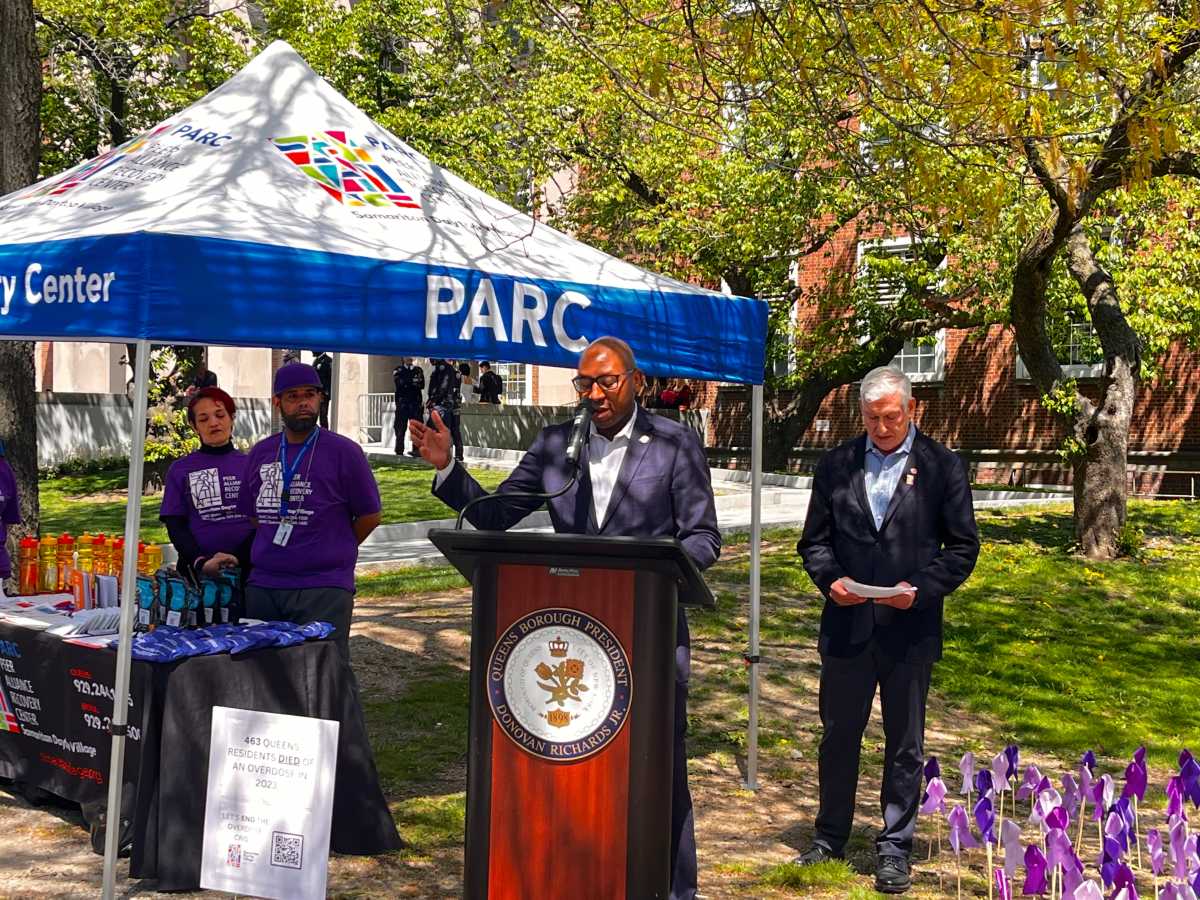
During the event, Netburn and Richards gave remarks about the importance of continuing to support programs that are critical in the fight against opioid addiction.
Netburn emphasized that Monday’s event was a time to reflect on those who were lost as well as the ripple effect it has had on their loved ones. “These are sons, daughters, brothers, friends unts uncles, and teachers. It’s not just the number of people who are lost, think of their families and who they knew, it gets multiplied, and thousands of people in Queens are affected by tragic overdoses,” he said.
He added that although overdoses have gone down nationally, this coverage does not apply to all demographics. For people of color, overdoses have gone up, making overdose awareness particularly relevant and important for Queens residents. Within the harm reduction strategies, Netburn said that Narcan, also known as Naloxone, can save people’s lives if administered in time. During the event, PARC volunteers demonstrated how to administer Narcan and gave out kits to attendees.
Richards emphasized Netburn’s analysis of the unique impact opioid addiction has on people of color.
In Queens, people are dying from overdoses at a rate of more than one per day. People of color have also made up 71% of overdose deaths in NYC since 2003. “This makes this crisis especially urgent in Queens, the most diverse county in America. Let me be loud and clear, the scourge of opioid addiction has to stop,” he said. “I want all those who have substance abuse disorders who may see coverage of today’s event to understand that we are not giving up on you,” he said.
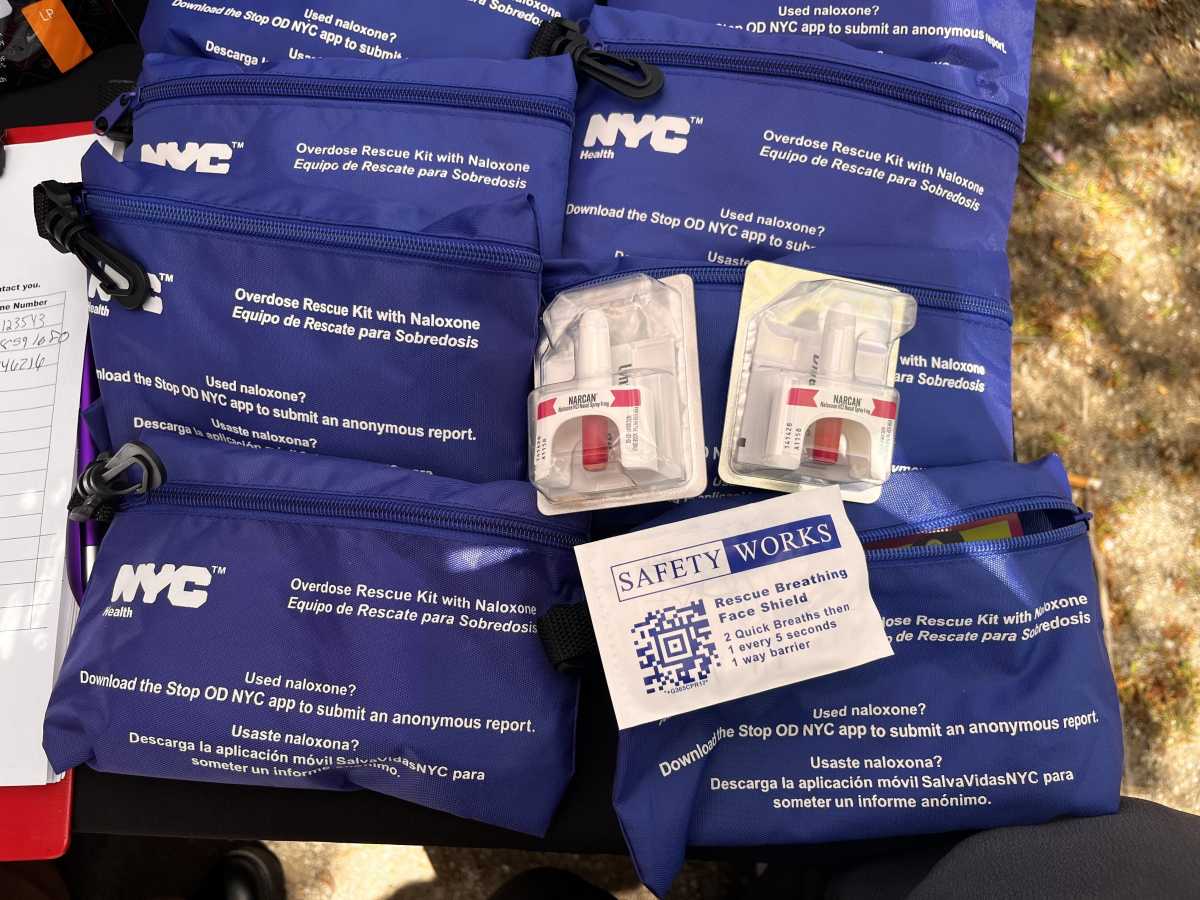
PARC has two locations, in the Bronx and in Queens, at 89-31 161st St, 2nd Floor. The program works as an open community resource center that provides adult and family services related to immigration, mental health counseling, educational workshops, resume building, and more. PARC also conducts street outreach in subways, alleyways, and other areas for those who may need it.
“A lot of individuals just don’t know where to go, they don’t know how to access the services,” said Taylor Smith, a peer staff member. “ I think it’s really important to have something accessible that people can use to better their lives. Some people want change; they just don’t know how to start, so we’re that starting point.” Smith has been a member of PARC for 2 years, and was a previous graduate of one of Samartian Daytop’s inpatient programs.
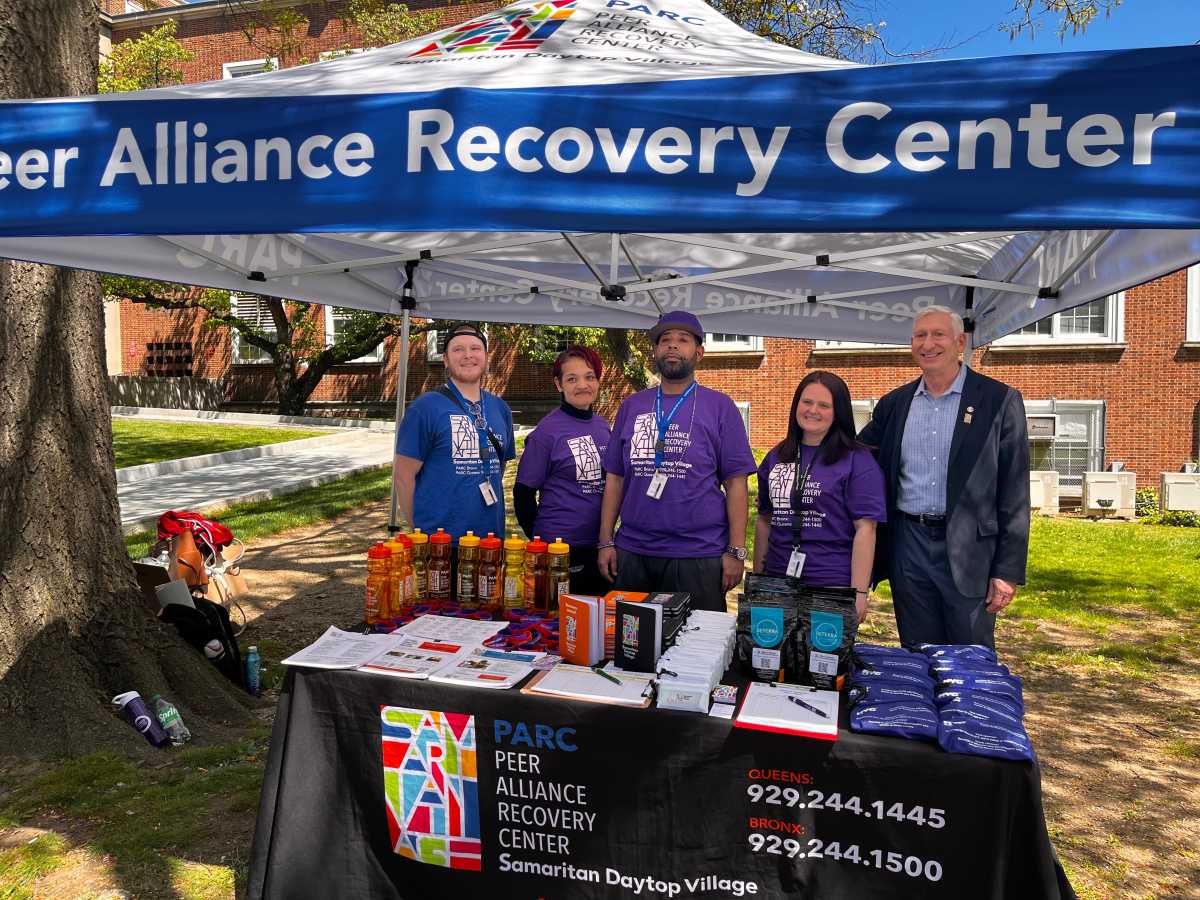
Byron Simmons, another peer staff member, shared his personal experiences with substance use and recovery. Simmons reflected on being three years sober, and shared that by finding like-minded people, recovery became a possibility for him.“ I got tired of the pain and suffering, and that’s where it ended. I started seeking ways to stop that pain as drugs were no longer a pain killer for me,” he said. Simmons said that being a member of PARC has provided him with an outlet for inspiration, and he gives back to those who also want to overcome their addiction.
Simmons has worked with Samaritan Daytop Village for over two years. He said his work in the support field as peer staff has inspired him to stay sober and keep moving forward. “ We help people get comfortable with us, we get comfortable with them, and they share what they need help with,” he said. “You give people hope, at least that’s what I try to do. I share my lived experience with them and they see I was able to make it out, and hopefully they believe that they can too.”
For over 60 years, Samaritan Daytop Village has been improving the quality of life for New Yorkers. The nonprofit is nationally recognized for the treatment of substance use disorder as well as for the veteran-specific approach it pioneered. Services also include health and mental health care, transitional and supportive housing, educational and vocational assistance, peer-assisted recovery, and specialized programs for adolescents, families, and seniors. Annually, Samaritan Daytop Village serves over 33,000 people at more than 80 facilities throughout New York City, Long Island, and the lower Hudson Valley.
Visit Samaritan Daytop Village’s official website at samaritanvillage.org for more information about its programs and services or to join the alumni association.


